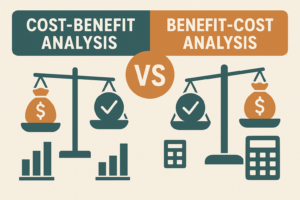The Triple Bottom Line-Informed Design (PRpc180) credit, introduced in LEED v5’s Project Priority and Innovation Library, provides design teams with a robust framework to quantify the full scope of benefits from sustainable building strategies. By assessing financial, social, and environmental impacts, this credit enables teams to align their design decisions with broader sustainability and ESG (Environmental, Social, and Governance) goals—while earning up to three points in the LEED certification process.
Why This Matters: Aligning with USGBC’s Strategic Vision
This focus on the triple bottom line (TBL) aligns with the U.S. Green Building Council’s (USGBC) 2024–2026 Strategic Plan, which emphasizes integrating environmental, social, and economic priorities into building design. USGBC aims to drive innovation in the built environment, ensuring that green building practices support ecological health, social equity, and economic prosperity.
However, you don’t need to wait for LEED v5 to start leveraging the benefits of TBL analysis. Using Autocase, design teams can already earn up to two Innovation points under the existing LEED v4 and v4.1 systems—positioning teams for success today while preparing for the transition to LEED v5’s PRpc180 credit.
Key Features of the LEED v5 Triple Bottom Line-Informed Design (PRpc180) Credit
The Triple Bottom Line-Informed Design (PRpc180) credit offers 1–3 points through the following options:
Option 1: TBL-Supported Goal Setting (1 Point)
- Analyze at least one strategy from each LEED v5 Impact Area:
- Decarbonization
- Quality of Life
- Ecosystem Conservation & Restoration
- Use this analysis to set ESG performance targets and provide a narrative explaining the process.
- Impacts must be quantified and monetized (e.g., $ per ton of CO₂ avoided, $ in health productivity gains) and documented via Net Present Value (NPV).
Option 2: Alternatives Analysis (1 Point)
- Conduct a TBL analysis for at least one LEED credit, comparing two or more design strategies (e.g., HVAC, envelope, lighting, or materials).
- Quantify and monetize life cycle benefits and costs using:
- Net Present Value (NPV)
- Simple Payback Period (SPP)
- Benefit-Cost Ratio (BCR)
- Evaluate metrics including:
- Capital costs
- Operational savings
- Monetized social and environmental co-benefits (e.g., health, carbon, comfort)
- Deliverables include:
- NPV of financial, social, and environmental results
- Summary of inputs and assumptions
- One-page narrative explaining how TBL analysis shaped design decisions
Option 3: Communicate and Report (1 Point)
- Conduct a final TBL analysis evaluating the as-built design against a baseline.
- Requirements:
- Analyze at least 8 LEED strategies across 3 credit categories
- Monetize net financial, social, and environmental value
- Include results in LEED documentation
How Autocase Supports the PRpc180 Credit
Autocase software streamlines TBL analysis, automating the valuation of sustainability strategies across energy, carbon, health, water, and materials.
For LEED v5 Projects
- Analyze strategies aligned with LEED v5 Impact Areas
- Run alternatives analyses to compare design options
- Export standardized documentation ready for LEED submission
For LEED v4/v4.1 Projects
- Earn up to two Innovation points by performing a Triple Bottom Line analysis under LEED v4 or v4.1
- Use the same validated methods to quantify value across financial, social, and environmental dimensions
Why Use TBL Analysis for LEED Certification?
The Triple Bottom Line-Informed Design (PRpc180) credit represents a major shift in how sustainability is evaluated within LEED. It:
- Moves beyond traditional cost-benefit analysis
- Highlights the comprehensive value of sustainability strategies
- Strengthens the business case for green design through measurable ESG metrics
By adopting TBL analysis, project teams can:
- Encourage data-driven design decisions early in the process
- Elevate the role of health and social well-being in building design
- Secure more LEED points while creating greater value for people, profit, and the planet
Ready to Maximize LEED Points While Driving ESG Impact?
Autocase is a trusted USGBC partner supporting hundreds of LEED and ESG-driven projects. Whether you’re preparing for LEED v5’s PRpc180 credit or optimizing your project under LEED v4.1, we help you make the business case for sustainability—with tools that quantify what matters.





